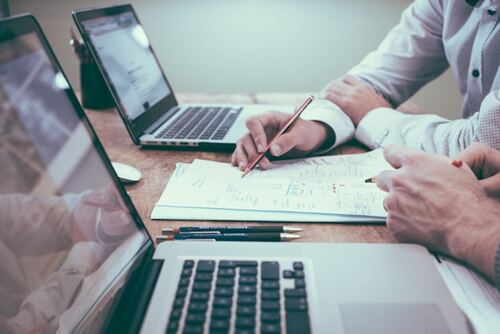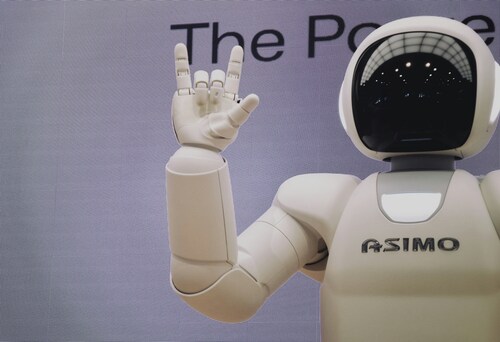Artificial intelligence is changing how creators work, making video editing and photo editing faster, easier, and more creative. AI in video editing and photo editing is not just a buzzword; it is a set of real tools that save time, improve quality, and open new creative possibilities.
Whether you are a professional editor or a beginner learning the craft, understanding how AI is transforming these fields can help you make better choices and stay ahead of the curve.
The Rise of AI-Powered Editing Tools
In recent years, AI has become an essential part of the creative workflow. Video editors use AI to automate tedious tasks like cutting silent sections, stabilizing shaky footage, and color-grading clips with cinematic precision.
Photo editors rely on AI to remove backgrounds instantly, retouch portraits with subtlety, and even upscale low-resolution images without losing detail.
Companies like Adobe and Canva have integrated AI into their software to help creators save hours of work. Instead of spending time on repetitive steps. Editors can focus on storytelling, design, and emotion, which remain the true heart of content creation.
How AI Enhances Video Editing
AI in video editing is especially helpful for those producing content at scale. Automatic scene detection identifies different parts of your footage, making it easy to rearrange clips. Speech-to-text technology creates accurate subtitles in minutes, improving accessibility and search ranking for online videos.
Another key feature is AI-driven color grading, which analyzes a clip and suggests professional-looking color schemes. For social media creators and YouTubers, AI-based video cropping ensures the same video can be shared in multiple aspect ratios like vertical, square, or widescreen, without manual reframing. AI even assists with audio cleanup, removing background noise with a single click, resulting in clearer sound.
AI and Photo Editing: Creativity Made Simple
Photo editing has also been revolutionized by AI. Advanced object selection allows editors to isolate subjects instantly, removing the need for tedious manual masking. Portrait retouching tools use AI to smooth skin, adjust lighting, and enhance features naturally without over-editing.
AI Image Generator tools have become popular for creating unique backgrounds, textures, or even entire compositions from text prompts. This opens new creative possibilities for designers and photographers who want to experiment with styles, concepts, and scenes that would be hard to shoot or create manually.
AI upscaling is another breakthrough. Low-resolution images can be enlarged while preserving details, saving shots that would otherwise be unusable. Background removal, once a task reserved for experts, is now accessible to anyone thanks to AI models that separate subjects from complex scenes with surprising accuracy. These tools empower photographers and designers to work faster while achieving professional results.
Benefits of AI in Video Editing and Photo Editing
The main benefit of using AI in video editing and photo editing is speed. What used to take hours can now be done in minutes. Editors can complete projects more quickly and focus on creative decisions instead of technical chores.
Another advantage is accessibility. Beginners who once found editing software intimidating can now achieve polished results without mastering every tool. AI acts as an assistant, suggesting edits and automating steps, helping users learn by doing. This democratization of editing is giving rise to more diverse voices and styles in digital content creation.
Professional quality is also easier to achieve. AI helps correct mistakes, balance colors, and fine-tune images or videos to industry standards, ensuring that even small teams or solo creators can produce work that looks premium.
Challenges and Ethical Considerations
While AI has transformed editing, it is important to recognize its limitations. Automated tools can make mistakes, especially with complex footage or unusual subjects. Editors still need to review results carefully and make manual adjustments when necessary.
Ethical considerations also matter. AI-powered deepfake tools can manipulate images and videos convincingly, raising concerns about misinformation. Responsible use of AI means understanding these risks and ensuring transparency in how edited content is shared.
Privacy is another issue. Some AI tools rely on cloud processing, meaning images and videos may be stored or analyzed on external servers. Creators should be aware of data security and choose trusted providers that respect user privacy.
The Future of AI in Video Editing and Photo Editing
AI in video editing and photo editing is evolving rapidly. In the future, we can expect even more powerful features, such as AI storyboarding that automatically suggests shot sequences, or style-transfer tools that replicate a specific filmmaker’s or photographer’s look with one click.
Collaboration will also improve. AI can help teams coordinate by automatically syncing versions, suggesting edits, or translating feedback across languages. For solo creators, AI might become a full creative partner, helping brainstorm ideas and generate variations to choose from.
Despite these advances, human creativity will remain central. AI can support and enhance editing, but it cannot replace the intuition, taste, and emotion that define truly memorable videos and photos.
Conclusion
AI in video editing and photo editing has transformed the creative landscape. By automating tedious tasks, improving quality, and making professional tools accessible to more people, AI is helping creators focus on what really matters: telling compelling stories and expressing their vision.
While there are challenges to manage, the benefits of AI in editing workflows are clear. Embracing these tools can help you stay competitive, save time, and unlock new levels of creativity in your projects.
FAQs
What is AI in video editing and photo editing?
AI in video editing and photo editing refers to using artificial intelligence to automate tasks like cutting clips, color grading, background removal, and retouching images.
Are AI editing tools good for beginners?
Yes, AI tools help beginners achieve professional results quickly by automating complex steps. They also make learning easier by providing suggestions and simplifying workflows.
Can AI completely replace human editors?
No, AI can assist but not replace human editors. Creativity, storytelling, and emotional impact still rely on human judgment. AI is best seen as a helpful assistant rather than a substitute.
Is AI editing safe and ethical?
AI editing is generally safe when used responsibly, but ethical concerns exist, such as deepfakes and privacy risks. Editors should use trusted tools, respect subjects’ rights, and be transparent about edits when necessary.



